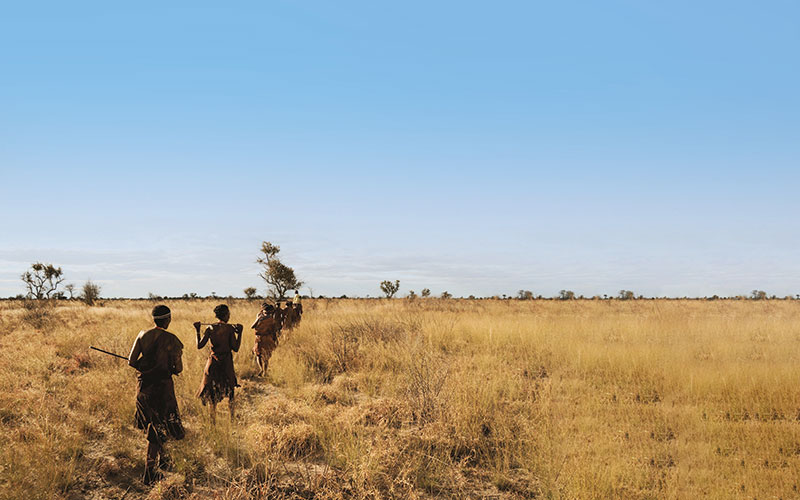Stephen Mortlock looks at the health, history and medicine of a diverse group of hunter-gatherers from southern Africa.

In Africa there is a 970,000 square mile semi-arid savanna (grassland ecosystem) stretching across parts of Botswana, South Africa and Namibia, a vast area notable for its red sand dunes, sparse vegetation (with the occasional tree) and a lack of permanent surface water. Shade temperatures often reach 43°C–46°C on summer days but drop to 21°C–27°C in the night, while temperatures on winter nights commonly drop to freezing and may go as low as 12°C. This is the Kalahari desert; its name is derived from the Tswana word Kgala, meaning “the great thirst”, or Kgalagadi, meaning “a waterless place”. Despite this, a wide range of migratory birds and animals call the Kalahari their home. Cheetahs, spotted hyena, Cape wild dog, lions, leopards, wildebeest, porcupines, antelopes, springbok and even elephants are present in this desert. This is also the home of the San people, who have adapted to the hard conditions of this desert-savannah environment for at least 30,000 years and, because of their intimate knowledge of the land, developed a remarkably stable culture. They remained isolated in the Kalahari when other groups migrated to populate the planet some 100,000 years ago resulting in only minimal genetic mixing with other groups. Some geneticists believe they may be the closest descendants of the original humans on planet Earth.
Please click here to read the full article.
Image credit | Shutterstock
